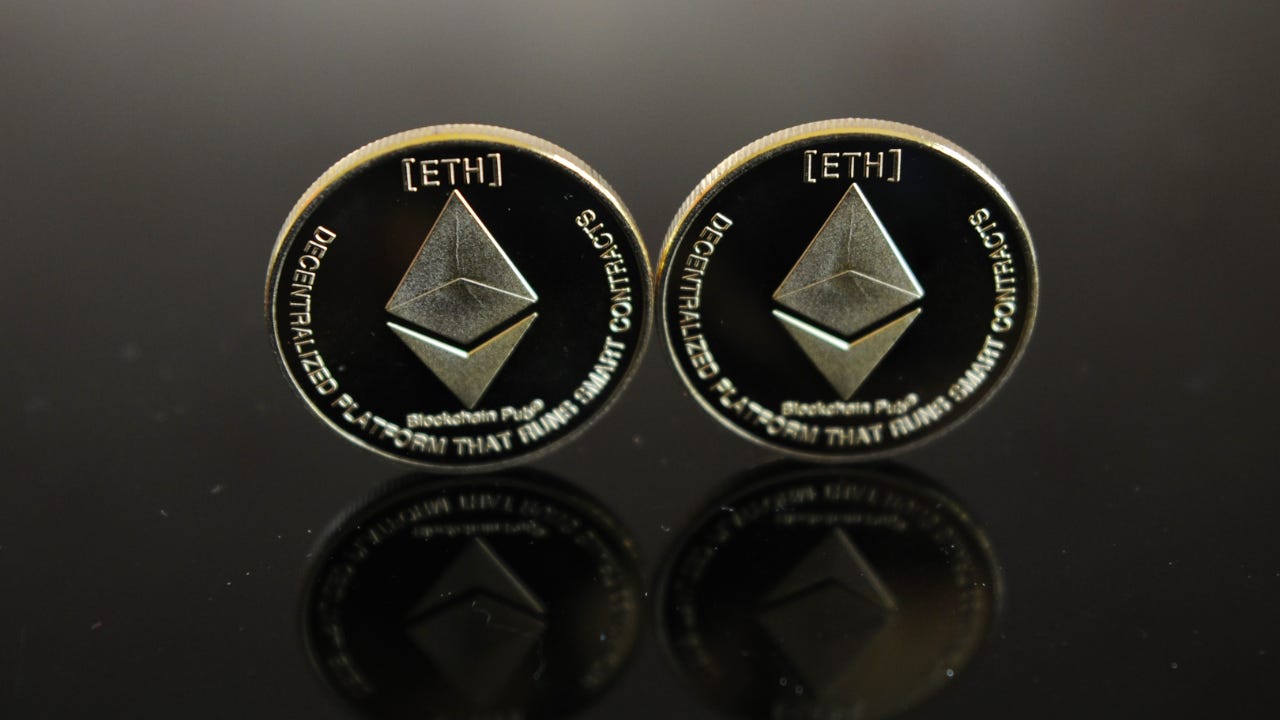Ethereum 2.0: How the Ethereum Merge affects you

A huge event in the cryptocurrency world is on the horizon, after months of delays and revised timelines. Ethereum, the second-largest digital currency, is fundamentally changing how it creates and manages its system, becoming more energy-efficient and scalable in the process.
Currently scheduled for Sept. 19, 2022, the “Merge,” as it’s being called, has big implications for the cryptocurrency’s future and Ethereum traders. Here are the key things to know about the Merge.
What is the Ethereum Merge?
The Merge is a long-awaited change to the Ethereum system, moving it from an inefficient proof-of-work protocol to what’s considered a much more efficient proof-of-stake setup. Both are ways to operate the blockchain system that manages and tracks every transaction in the cryptocurrency.
Here are the key differences between the two:
- In proof of work, the cryptocurrency relies on “miners” to mine crypto coins by completing complex mathematical calculations using energy-intensive graphics cards.
- In proof of stake, the cryptocurrency relies on the owners of the coin, stakeholders, to validate transactions. Stakeholders can earn rewards for doing so.
In making the switch to Ethereum 2.0, the cryptocurrency will still preserve its prior transactions under the proof-of-work protocol, but the new system called the Beacon Chain, will record transactions using the proof-of-stake protocol.
“Ethereum will not remain a single chain and just ‘evolve’ to Ethereum 2.0, but rather the chain will ‘fork’ and a new chain will branch off from the original to start a new algorithm and data chain of transactions,” says Vladislav Ginzburg, CEO of Blockparty, a digital asset marketplace.
This new system also comes with a new set of incentives to participate in the cryptocurrency.
In the proof-of-work system, rewards are randomly assigned to a computer in the distributed computer network managing that crypto’s blockchain. So miners are incentivized to have more “nodes” to increase their odds of getting the reward. But that setup changes in a proof-of-stake system, where those with the most cryptocurrency get the most rewards.
“This is a huge deal,” says Ginzburg. “The incentive structure changes in 2.0, incentivizing Ethereum operators to amass and hold as much [Ethereum] as possible.”
That change in incentive structure could have a profound impact on Ethereum’s price.
What to expect from the Ethereum 2.0 shake-up
The changes to the Ethereum protocol will create a number of benefits for the cryptocurrency system, including higher efficiency and scalability, making the platform more robust. It could also make the Ethereum token more valuable, because of how it incentivizes hoarding, and the change could create difficulties in other areas, such as graphics chips, at least in the short term.
If you own Ethereum, you won’t need to do anything to participate in the changeover. Everything will be done on the backend, and you may not even notice the technical changes.
Fundamental changes to Ethereum
One of the most important changes for Ethereum is its decreased energy use. And this is an area where cryptocurrencies have been (rightly) lambasted, since proof-of-work protocols, still used by Bitcoin, consume utterly huge amounts of energy. But with the switch to proof of stake, Ethereum’s energy consumption will plunge by about 99.95 percent, say the crypto’s managers.
And the change also creates a more powerful cryptocurrency system, say experts.
“In theory, the Merge will make Ethereum more efficient and quicker, with shorter processing times during peak network usage,” says Ginzburg. “Higher frequency and higher volumes of transactions will be possible at speed and scale.”
Greater efficiency and scalability may make Ethereum more effective for its business partners.
“As a result, we’ll see mainstream payment networks and processors, finance and asset exchanges become more aggressive in how they experiment putting their operations on the chain,” says Ginzburg.
Valuation of Ethereum
The Merge could also have significant effects on how Ethereum 2.0 is valued, something that traders are particularly keen to know about.
“Ethereum is positioned to become deflationary after the Merge,” says Aaron Samsonoff, chief strategy officer and co-founder of InvestDEFY, a creator of structured crypto products. He expects an approximately 90 percent drop in new Ethereum token issuance after the change.
A deflationary currency will tend to rise in value as lower supply meets stable or rising demand.
Other supply issues could create upward pressure on Ethereum’s price, too. Samsonoff expects rising staking rewards for those who stake their coins, leading to more coins held for investment and supply coming off the market. He also foresees greater institutional demand for Ethereum. Add it all up, and it seems to indicate a higher price for the digital currency.
But an increasing price isn’t a given if traders and others still prefer the old protocol.
“The big question is how will the market receive the fork?” says Ginzburg. “Will the original chain be [more highly] valued or the new 2.0 chain be [more highly] valued by users? Naturally, we believe the builders will prefer 2.0, but what about traders? Miners?”
And the shift from proof of work to proof of stake could cause a big shake-up in graphics cards, which are key to the proof-of-work protocol. Experts see Ethereum miners flooding the market with their graphics processors, leading to a massive decline in prices there.
Bottom line
Ethereum 2.0 is big news for the crypto world, but the fundamental factor for crypto as an investment is whether Ethereum becomes more widely adopted for real-life uses and not merely as a vehicle for traders. Those looking to place their bets on a highly speculative and highly touted asset should be prepared to lose a significant portion of their money, if not all of it, due to the risky nature of the crypto market.
You may also like






